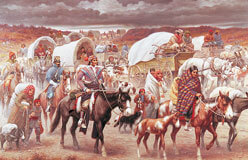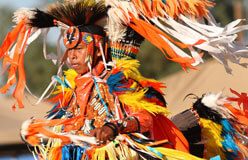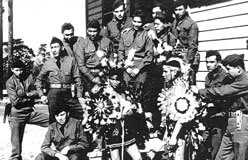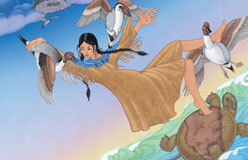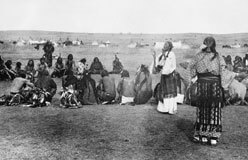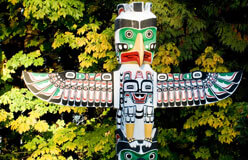Long ago, America was their land.
For thousands of years, the only people living on this continent were Native Americans. They were descendants of Asians who had crossed a land bridge to the northernmost part of America, then eventually spread south.
Then, beginning in 1492, Europeans came to America. Over the centuries, as a result of wars, policies, and diseases introduced by the newcomers, the Native population declined by 95 percent. Their land was reduced to “Indian country”—reservations and Indian trust lands.
Today, however, the Native population of the United States is growing. Modern Native Americans are made up of many different groups of people, but they all walk in two worlds—the ancient and the contemporary. Collectively, they are Wampanoag, Navajo, Iroquois, and Cherokee—to name just a few of the groups. Individually, modern Native Americans are artists, doctors, and teachers. They’re also spiritual healers and fancy dancers. Their children play basketball and shop at malls, but they also dress in traditional clothing and dance at powwows. Native Americans are eager to share their culture with others. Come learn about Native America—past and present.

▲ Whether they call themselves a tribe, a nation, or a band, there are hundreds of Native American groups. Each group has its own distinctive customs, government, and language. Larger groupings like those shown on the map above have similar languages and lifestyles.
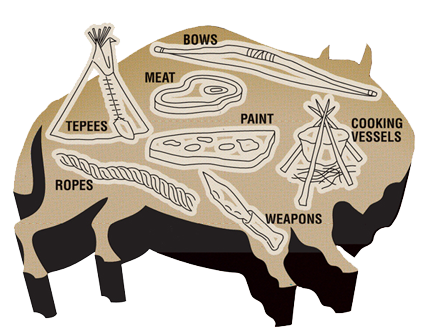
After the hunt, the Native Americans of the Great Plains used every part of the buffalo. However, white settlers who were killing for nothing but sport nearly wiped out the buffalo. In 1800 there were 40 million buffalo, but by 1875 there were only 1 million left.
Native Americans have adapted their traditional skills to modern life in many ways. Mohawks have been steelworkers since 1886, when a bridge builder noticed a group of Mohawk youngsters playing on a bridge across the St. Lawrence River. Looking for workers who would brave high places in strong winds, he trained the first 12 Mohawk workers. Those workers then trained their friends and neighbors. Soon there were Mohawk construction workers all over America. ▶
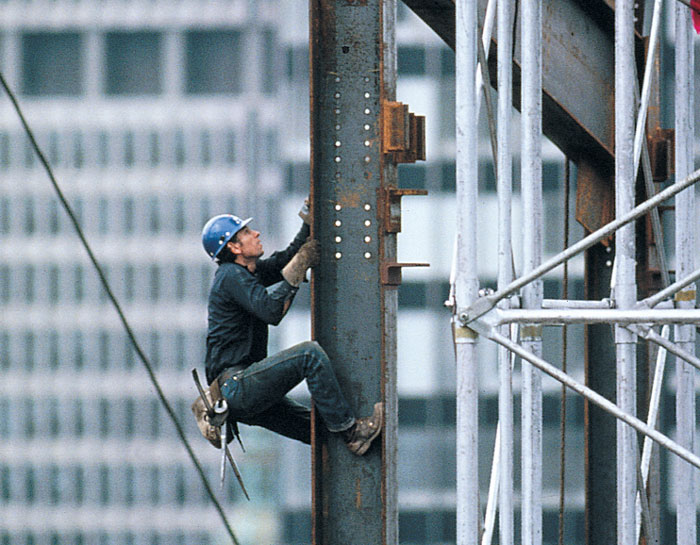
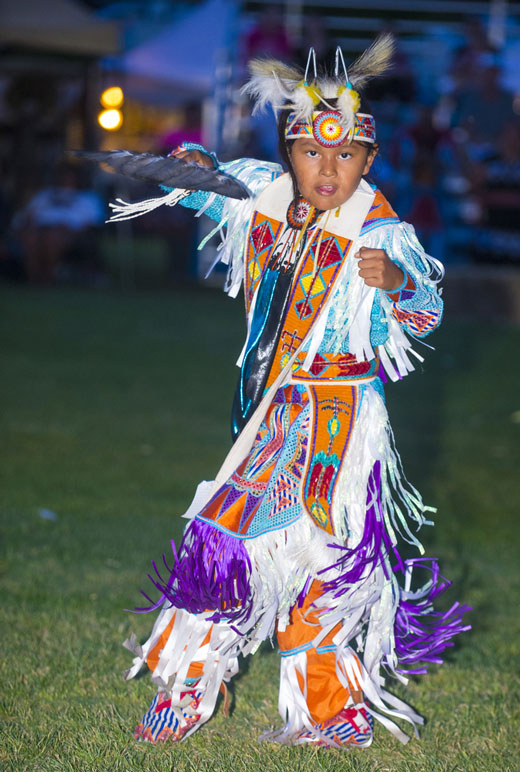
◀ The 2010 census counted more than 5 million Native people. Whether they live on reservations governed by individual tribes or in towns and cities, most of today’s Native Americans cherish their traditional culture. Today, some Native American children attend reservation schools. There they learn their native languages and take part in traditional ceremonies.

